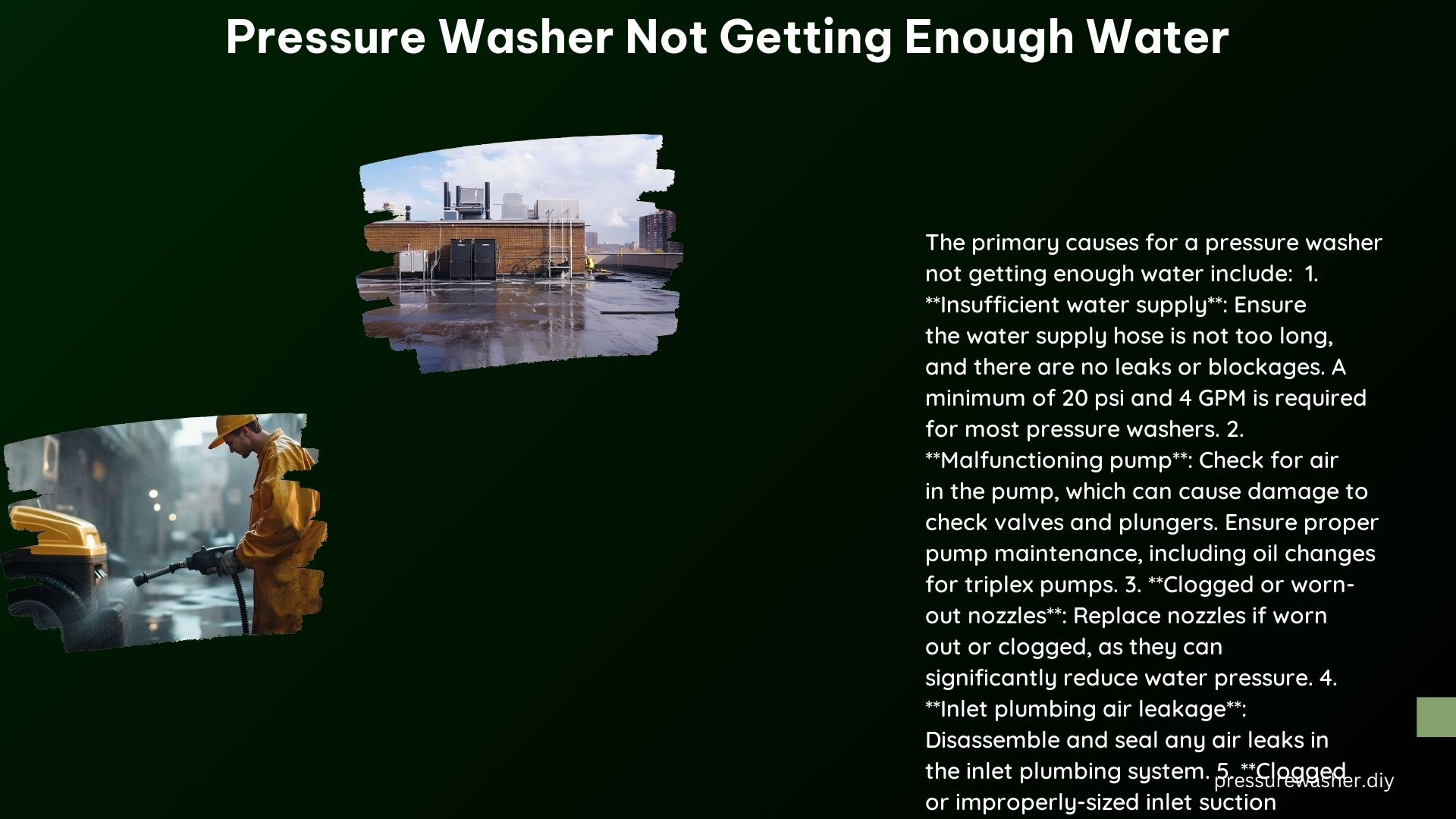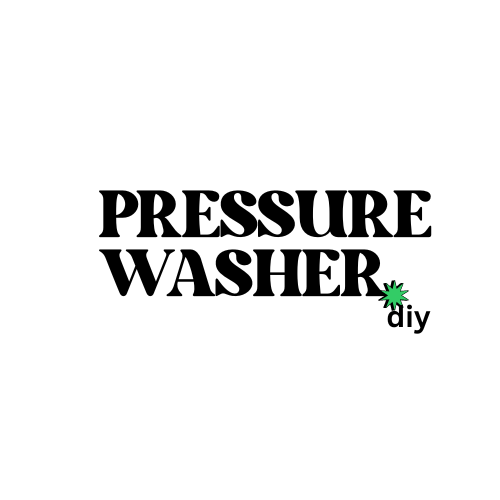If your pressure washer is not getting enough water, it can be a frustrating and perplexing issue. However, with the right troubleshooting steps and a deep understanding of the underlying causes, you can quickly identify and resolve the problem. This comprehensive guide will walk you through the various potential causes and provide detailed solutions to help you get your pressure washer back to optimal performance.
Insufficient Water Supply
One of the most common reasons for a pressure washer not getting enough water is an inadequate water supply. To ensure your pressure washer is receiving the necessary water flow, consider the following:
-
Water Pressure and Flow Rate: Check the water pressure and flow rate from the supply hose. The minimum requirements specified by the pressure washer manufacturer are typically around 20 PSI and 4 GPM (gallons per minute). Use a water pressure gauge and flow meter to accurately measure these values.
-
Hose Length and Diameter: Use a shorter hose or a hose with a larger diameter to reduce pressure loss due to friction. For example, a 50-foot, 3/4-inch garden hose can provide up to 10 PSI less pressure compared to a 25-foot, 3/4-inch hose.
-
Concurrent Water Usage: Ensure no other appliances or fixtures are using water simultaneously, as this can reduce the available water pressure and flow.
Clogged or Damaged Inlet Screen

The inlet screen, located at the water intake of the pressure washer, can become clogged with debris, reducing water flow. Regularly inspect and clean the inlet screen, and replace it if it is damaged.
- Typical inlet screen mesh size: 50-80 mesh (0.297-0.177 mm)
- Common debris that can clog the screen: sand, dirt, leaves, and other contaminants
Malfunctioning Pump
Issues with the pressure washer’s pump can also lead to insufficient water flow. Consider the following pump-related troubleshooting steps:
- Air Purge: Purge any air from the pump before operating the pressure washer. Air in the pump can reduce pressure and flow.
- Pump Oil Level: Check the pump oil level and add oil if necessary. Low oil levels can cause pump malfunction.
- Pump Replacement: If the pump is damaged, it may need to be replaced. Common pump issues include worn seals, valves, or bearings.
Leaks in the System
Leaks in the high-pressure hose, spray gun, or wand can allow air to enter the system, reducing water flow. Inspect these components for any signs of damage or wear, and replace O-rings or other faulty parts as needed.
- Common leak points: hose connections, gun trigger, wand joints
- Typical O-ring size for pressure washers: 1/4-inch to 3/8-inch diameter
Nozzle Size and Condition
The nozzle size and condition can significantly impact the water flow and pressure. Ensure you are using the correct nozzle size for your pressure washer’s specifications, as an oversized or worn-out nozzle can reduce pressure.
- Typical nozzle sizes for residential pressure washers: 0.25 to 0.40 GPM
- Nozzle wear can be identified by a wider, more dispersed spray pattern
Belt Slippage
If your pressure washer is belt-driven, check for any signs of belt slippage. Tighten or replace the belt if necessary, as belt slippage can reduce pump performance and water flow.
- Typical belt tension: 1/2 to 3/4 inch of deflection with moderate finger pressure
Relief Valve Issues
The relief valve is responsible for regulating the pressure in the system. If the relief valve is stuck or dirty, it can cause pressure loss and reduced water flow. Clean and adjust the relief valve as needed.
- Typical relief valve cracking pressure: 2,000 to 3,000 PSI
Inlet Plumbing Air Leakage
Air leaks in the inlet plumbing system can allow air to be drawn into the pump, reducing water flow. Disassemble and seal any air leaks in the inlet plumbing.
- Common leak points: hose connections, fittings, and joints
Inadequate Fluid Filtration
Proper filtration is essential to prevent abrasives or cavitation from affecting the pump’s performance and water flow. Ensure the pressure washer has adequate filtration, such as a water filter or inline filter, to protect the pump.
- Typical filter mesh size: 50-100 mesh (0.297-0.149 mm)
By addressing these potential causes, you can effectively troubleshoot and resolve issues with your pressure washer not getting enough water. Remember to always follow the manufacturer’s instructions and safety guidelines when working on your pressure washer.
References:
– Briggs & Stratton. (n.d.). Why is my pressure washer producing low or no pressure? Retrieved from https://www.briggsandstratton.com/na/en_us/support/faqs/browse/pressure-washer-produces-low-pressure.html
– Repair Clinic. (2022, July 15). No Water Pressure In Your Pressure Washer? 2 Likely Causes. Retrieved from https://diy.repairclinic.com/no-water-pressure-in-your-pressure-washer-2-likely-causes/
– Alkota. (n.d.). 9 Reasons Your Pressure Washer Might Be Losing Pressure. Retrieved from https://alkota.com/9-reasons-your-pressure-washer-might-be-losing-pressure/
– Reddit. (2023, September 28). Pump not keeping up? Or not enough water? Retrieved from https://www.reddit.com/r/pressurewashing/comments/16uudpn/pump_not_keeping_up_or_not_enough_water/
– JustAnswer. (2012, June 23). Twice now, my high pressure washer won’t pass water through. Retrieved from https://www.justanswer.com/small-engine/6tpiy-twice-now-high-pressure-washer-won-t-pass-water.html
